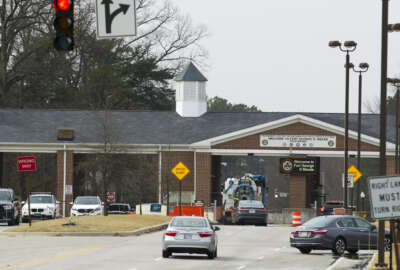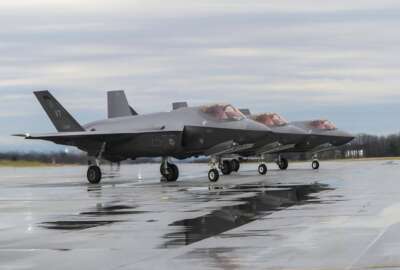Marine Corps needs more agile MILCON process
“There's nothing magic about construction for the Marine Corps. The challenge is the program budget process,” said Rear Adm. Dean VanderLey.
Addressing environmental or man-made threats within the military construction process can be challenging for military installations. More often than not, the Marine Corps taps into its facilities, restoration and modernization funds to do urgent repairs or adjustments, but it always comes at a cost.
“We don’t have agility that we would like to have for military construction,” Col. Jeff Hammond, the deputy commander of the Marine Corps Installations Pacific, said during the Modern Day Marine conference on Wednesday.
For instance, the service recently transitioned the 12th Marine Regiment into the 12th Marine Littoral Regiment at Camp Hansen, Okinawa, spending a sizable amount of its budget to make sure the transition happens on time since it’s a capability the service needs to have by a certain time.
“That’s not negotiable. So we’ll go down that road. But what it comes down to is it’s a sacrifice. We can do anything; we just can’t do everything. So the ruthless prioritization of funding with that [operations and maintenance] process,” said Hammond.
Rear Adm. Dean VanderLey, commander of Naval Facilities Engineering Systems Command, said the biggest challenge for agile MILCON is the program budget process.
Budget submissions for all military construction projects for fiscal 2026 are due in August. It means that any project that will be included in the 2026 budget is already well underway.
And if a new requirement comes up at any point in the coming fiscal year, the first chance to inject it into the budget will be in the 2027 budget cycle. The earliest the service can deliver a particular capability within this process would be fiscal 2029.
“There’s nothing magic about construction for the Marine Corps that’s fundamentally different from construction in the private sector. The challenge is the program budget process,” said VanderLey.
“If you come to me today saying, ‘I need x,’ and we try to inject it in the normal MILCON process, I’m going to say, ‘I’ll get that to you by 2029.’ And most of that’s not the construction period. It’s the programming process that goes through DoD and ultimately through Congress.”
While there are emergency MILCON authorities that allow the Marine Corps to inject funds into urgent construction projects outside of the regular budgeting process, it will most likely come at the expense of other planned projects.
Within the contracting process, there are flexibilities to bypass bureaucracy and expedite project delivery, but there are trade-offs in terms of cost, schedules and capability.
For example, the Navy had a major issue with the seismic vulnerabilities in its dry docks in the Pacific Northwest, to the point where the dry docks got decertified.
Through undefinitized contract action, the service was able to complete almost $400 million worth of repairs to the dry docks in about four months.
“We put somebody on contract in a day, got them working, figured out the scope while we were doing the work, and then we’re able to definitize and then complete that very fast,” said VanderLey.
“Obviously, there’s some trade-offs there because that’s generally a fairly expensive way of doing business. But it is a way that we can do business to get that sort of resiliency.”
VanderLey said these are not necessarily ideal solutions to build truly resilient installations, but these expeditionary tools can be a way to achieve some agility within the MILCON process.
“I think we do do a good job of the being steady and stable inside the MILCON environment, but we need more authorities to be more reactive across the board,” said Brig. Gen. Jason Woodworth, the commanding general of the Marine Corps Installations West.
Copyright © 2025 Federal News Network. All rights reserved. This website is not intended for users located within the European Economic Area.







